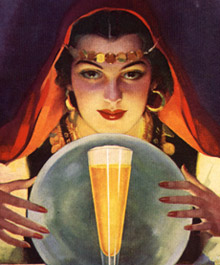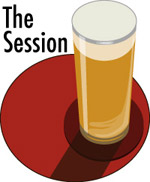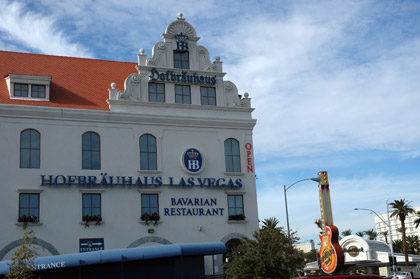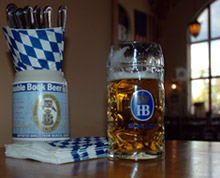While some of you may have been sleeping in on January First we were venturing up and down the sand dunes nears Stovepipe Wells (Elevation 0) in Death Valley. If you click on the photo you’ll find it easier see one person (Daria) standing and another (Sierra, in pink) sitting.
What does this have to do with beer? Nothing, other than to explain why I suggested a while back there will be less blogging here in 2008 and 2009 than there was last year.
Long before the first post went up at Appellation Beer we were already planning a trip that will last nearly 15 months. After Sierra graduates fifth grade in May we’ll be headed north to Alaska. By August of 2009 we expect we’ll have been in 49 states, the District of Columbia, nine Canadian provinces, and 14 European countries.
Since they have nothing to do with the mission here, no need to bore you with trip details — there will probably be another blog for that.
When we started talking about this adventure it was to be even more of a sabbatical (other than for Sierra, for whom school never ends). Since then other beer-related projects have popped up. I’ll be working on a book about wheat beer for Brewers Publications, and want to get the Beer Oral History Institute rolling. Expect a few magazine stories as well — got to compensate for what’s happened to the dollar in recent years — and posts here when time and Internet connections permit.
But the recent trip should be pretty typical. Had we been planning to update the Beer Lovers Guide to the USA then when we returned home through Las Vegas we would have felt obligated to visit the city’s brewpubs and the Freakin’ Frog, a suddenly famous beer bar. Instead we went to the Hofbräuhaus, because in the fall we can visit the original in Munich.
So that’s our plan. Maybe we’ll see you along the way.
I guess that might involve beer.

 Go away a few days and links worth pointing to and/or commenting on sure pile up. Some have sparked ideas for longer posts in the next few days. Even so the list got long too fast so I’ve tried to minimize my musing:
Go away a few days and links worth pointing to and/or commenting on sure pile up. Some have sparked ideas for longer posts in the next few days. Even so the list got long too fast so I’ve tried to minimize my musing: Wilson has posted the roundup for
Wilson has posted the roundup for 
 What a dunce. They meant a strong beer in the manner of a bock, in this case a helles bock (akin to what many know as a Maibock). As you can see, golden (lighter than appears here), strong at 8% abv, but not at all like the doppelbock “invented” by the monks of St. Francis of Paula in Munich. Not a beer you’d call [fill in the blank]-ator.
What a dunce. They meant a strong beer in the manner of a bock, in this case a helles bock (akin to what many know as a Maibock). As you can see, golden (lighter than appears here), strong at 8% abv, but not at all like the doppelbock “invented” by the monks of St. Francis of Paula in Munich. Not a beer you’d call [fill in the blank]-ator.